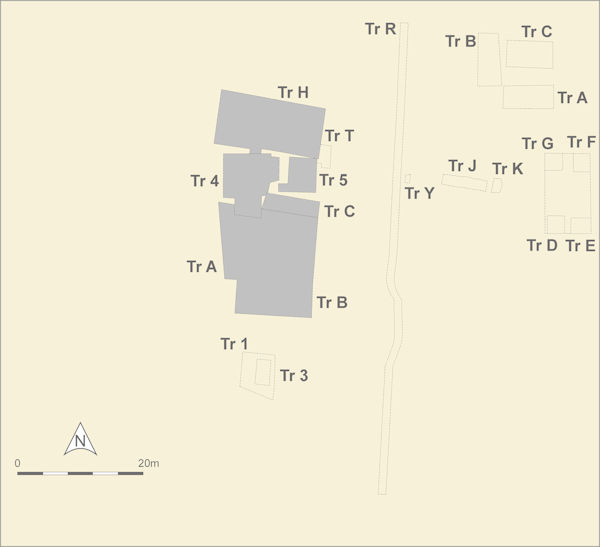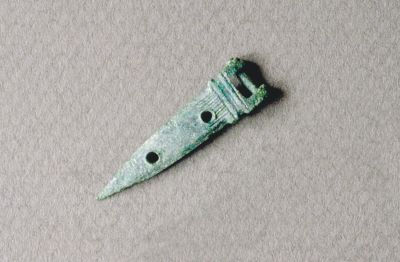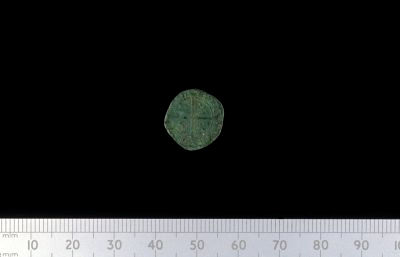

During this period, the Church and West and South Range buildings were demolished (see Section 2.5).
Layer J308 contained a number of fragments of broken roof slates, while layer J316, the layer immediately below, included pieces of plain window glass. At JEJ was a considerable number of broken ceramic roof tiles and ABW was a stone roof tile embedded in layer A130 and ABX was a slot where a roof tile had fallen and been removed. These were the remains of roofing material from the stone church and the West Range building. The Phase 6 courtyard was filled with a closely packed layer of mortar and stone rubble presumably from the demolition of the stone church. The walls JCF and JCU were slighted and covered over with this same rubble.

Shallow pits were dug within one of the West Range rooms (AGA-AGD, AFY, AFZ) and filled with demolition rubble. Copper alloy finds from the West Range demolition material included a virtually complete tap [930], copper alloy buckle pin [Photo 0440] [870], pins [903, 905], lace chapes [912, 879] and a fragment of vessel glass [1510].

A Scottish copper bodle [19] of Charles II [Photo 0268] appeared to be in the demolition material, but was dated to 1677-9 and may have been intrusive or have been associated with the mid-17th century use of the land.
The fact that slates and roof tiles were not found in any great quantity would tend to confirm the fairly definite statements in the Town Council Records that slates were systematically removed and put to other purposes (Stuart 1844, 315). The group of window glass fragments from J157 lying above layer J153 [1520, 1526, 1527] and on the exterior surfaces around the north-west corner of the church had the appearance of lying where it fell after a window (perhaps a large west window) was smashed and the bulk of the glass removed for re-use as cullet. Fragments of window glass were also found at random in the burial layers. This tends to give weight to the suggestion (discussed more fully elsewhere) that burial continued within the stone church after the Reformation brought friary activity to an end, and that glass scattered from broken windows was distributed downwards during grave digging. There were also scatters of window glass on the floors and in the demolition rubble in Rooms 1, 2 and 3 of the West Range building.
During this demolition phase, garden soils continued to accumulate, possibly as a result of continued cultivation. These layers contained a copper alloy bar mount with suspension loop [876].
Internet Archaeology is an open access journal based in the Department of Archaeology, University of York. Except where otherwise noted, content from this work may be used under the terms of the Creative Commons Attribution 3.0 (CC BY) Unported licence, which permits unrestricted use, distribution, and reproduction in any medium, provided that attribution to the author(s), the title of the work, the Internet Archaeology journal and the relevant URL/DOI are given.
Terms and Conditions | Legal Statements | Privacy Policy | Cookies Policy | Citing Internet Archaeology
Internet Archaeology content is preserved for the long term with the Archaeology Data Service. Help sustain and support open access publication by donating to our Open Access Archaeology Fund.